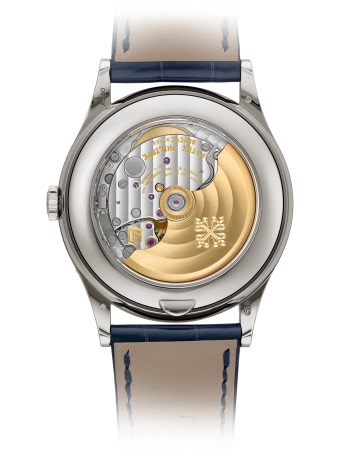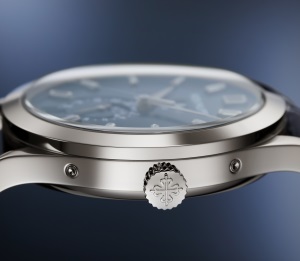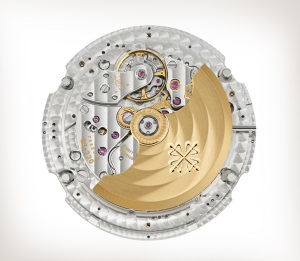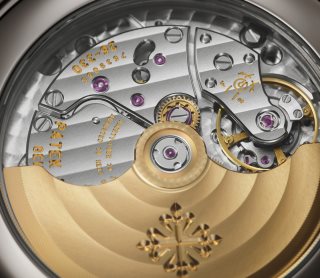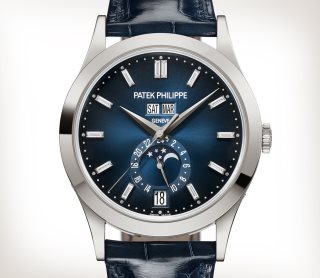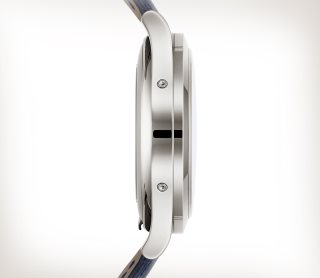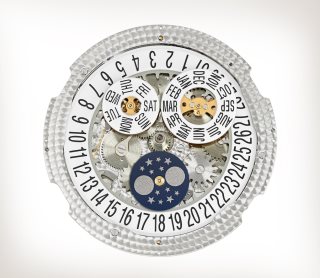Introduction
5396G
-
Complications
Self-winding
Patek Philippe reinterprets its famous men’s Annual Calendar Reference 5396 in a new white gold version featuring a sunburst blue dial with black-gradient rim, discreetly enhanced by the brilliance of twelve baguette diamond hour-markers (0.26 ct). The dial color is echoed by a shiny navy-blue alligator leather strap.
With its double day/month aperture at 12 o'clock, date aperture at 6 o'clock and 24-hour subdial with integrated moon-phase display, self-winding 26-330 S QA LU 24H caliber indicates the date for 30- and 31-day months and requires only one manual adjustment per year at the end of February.
